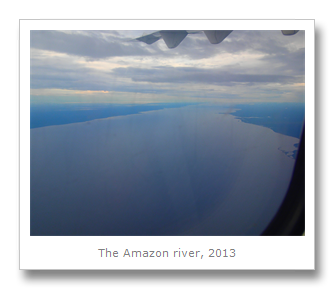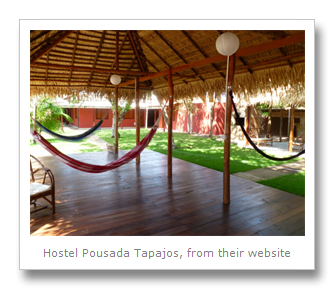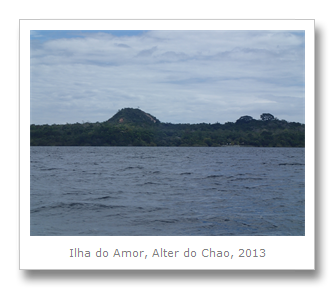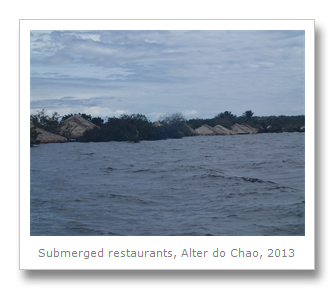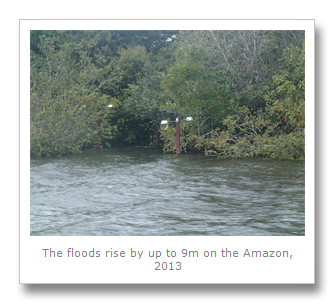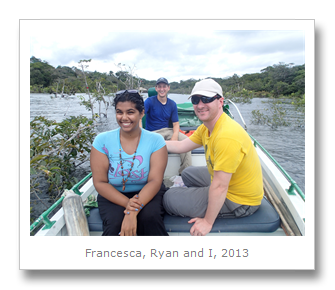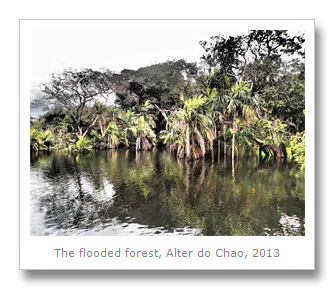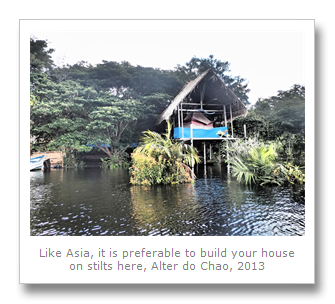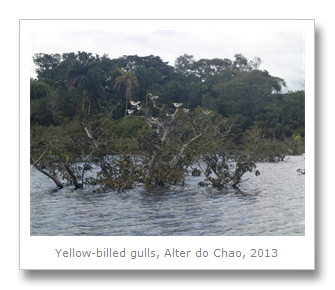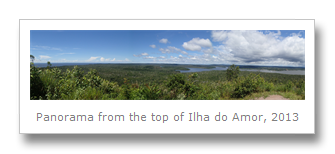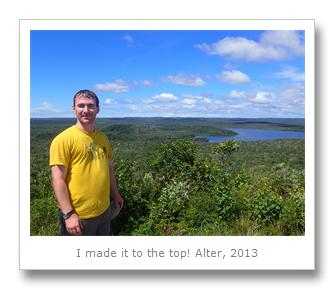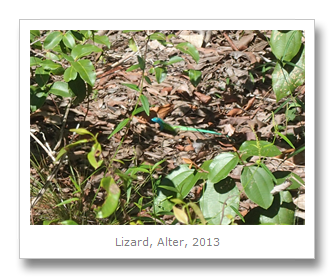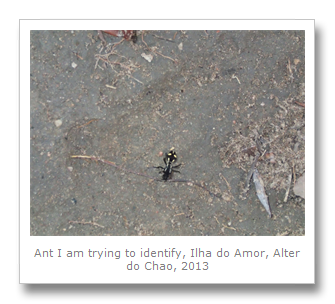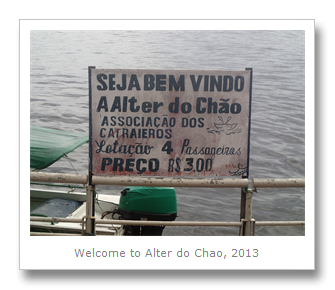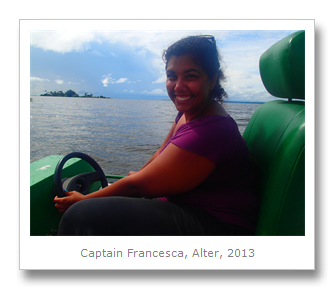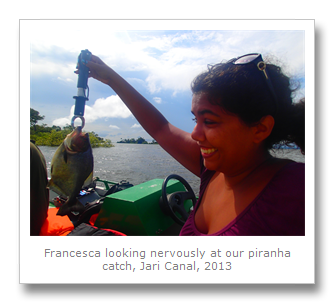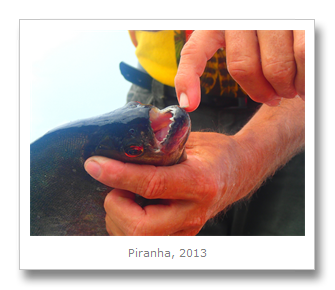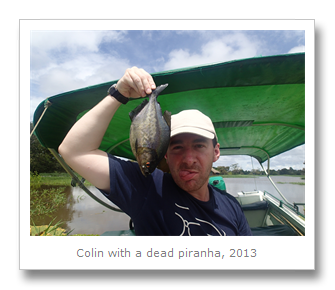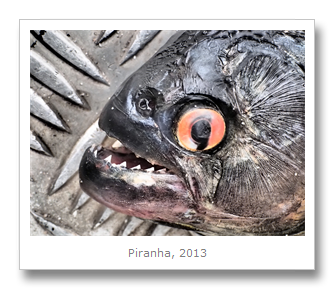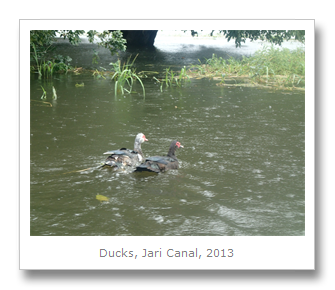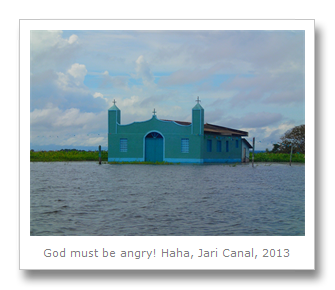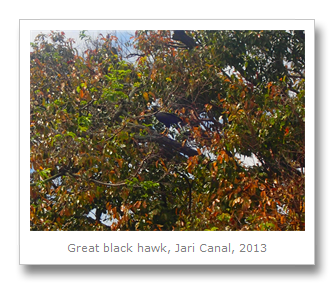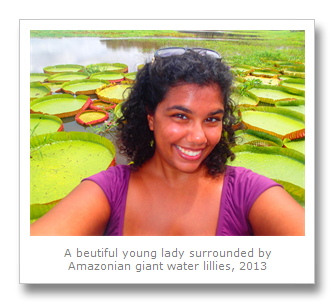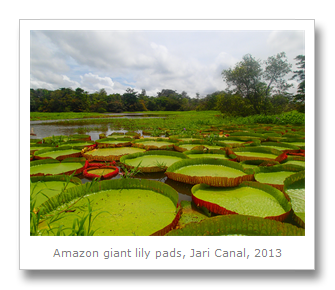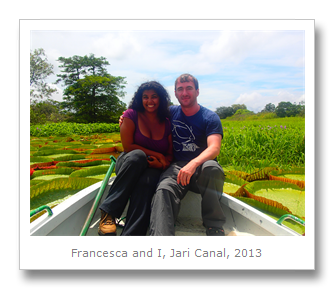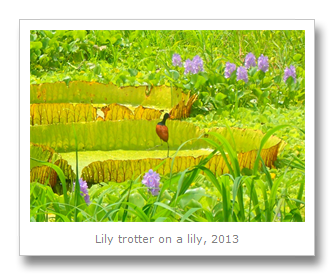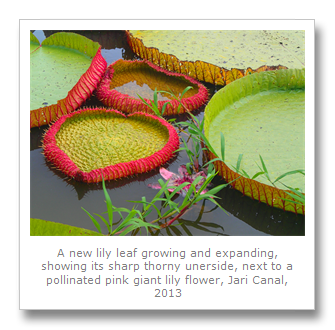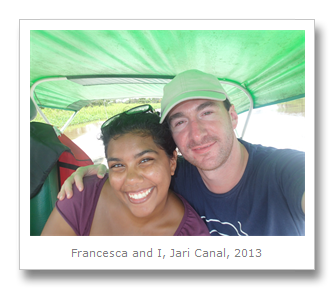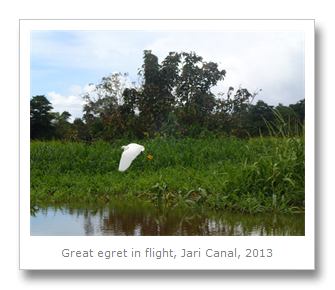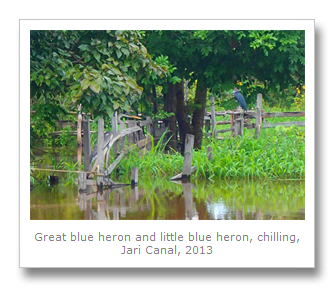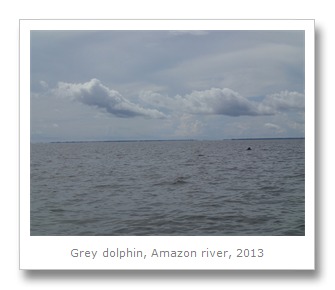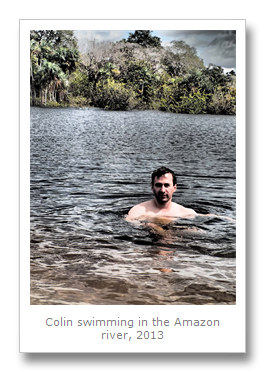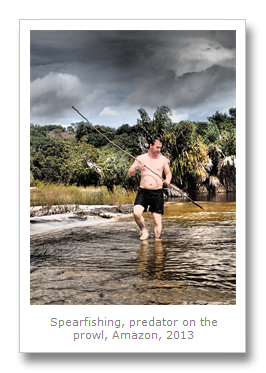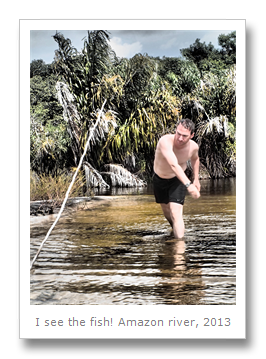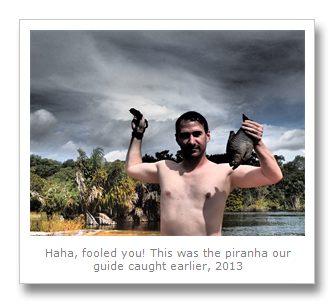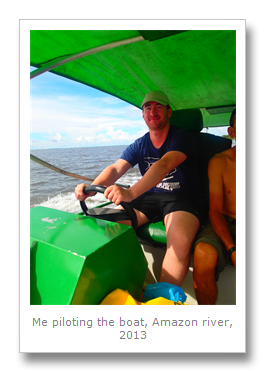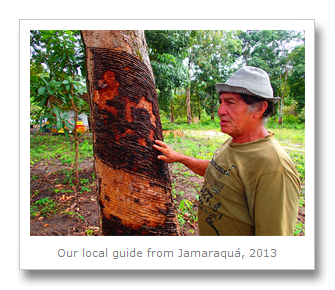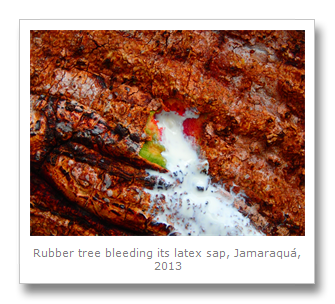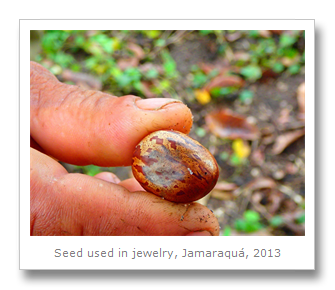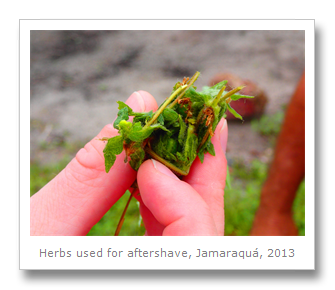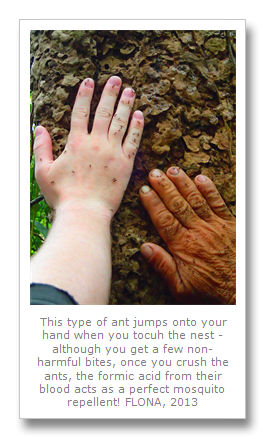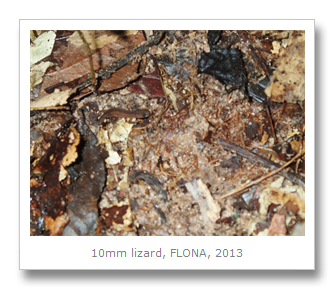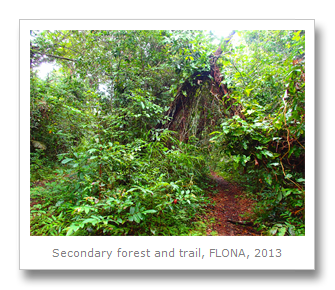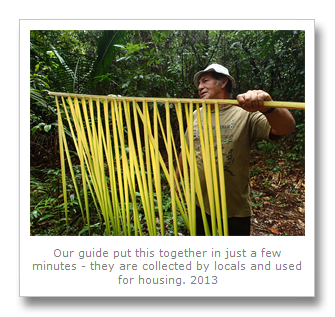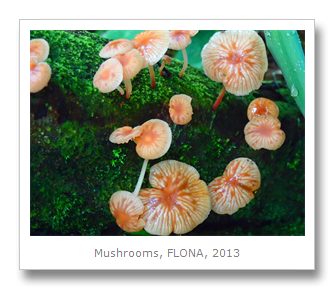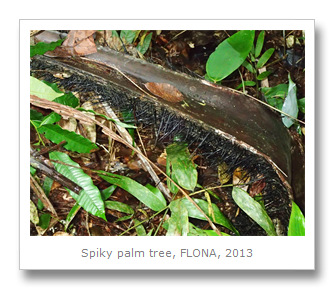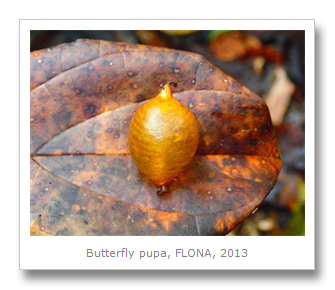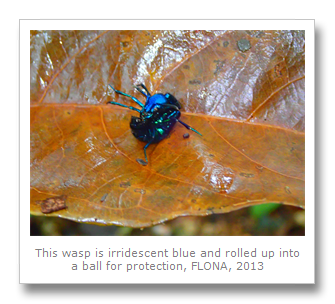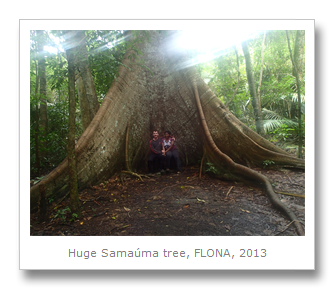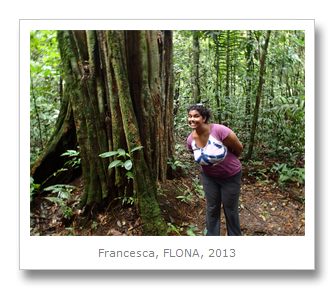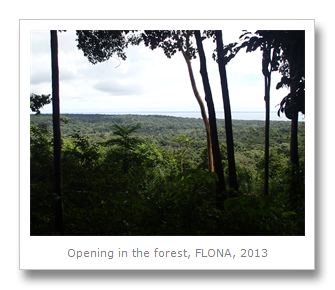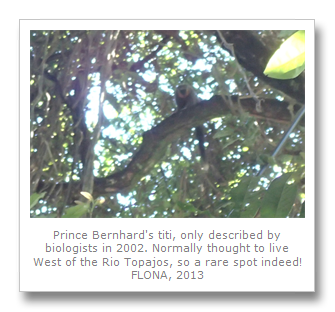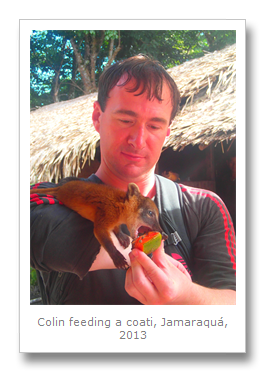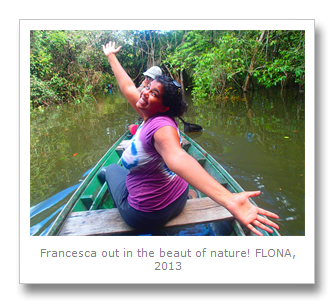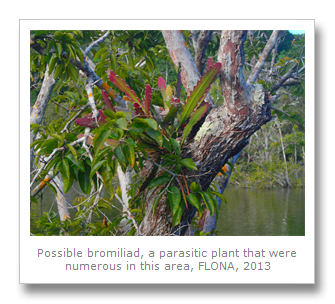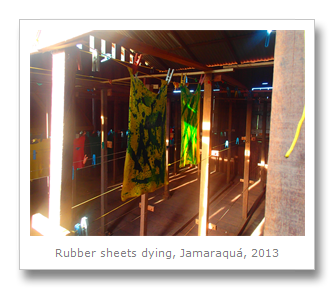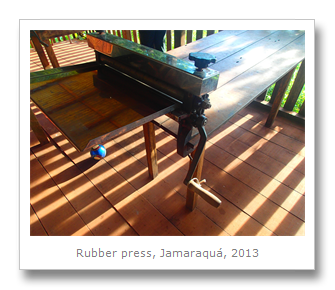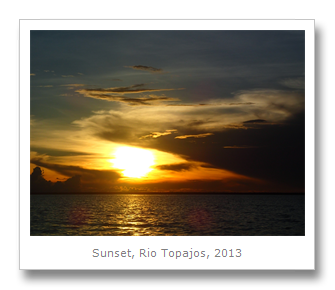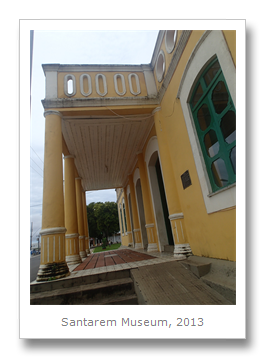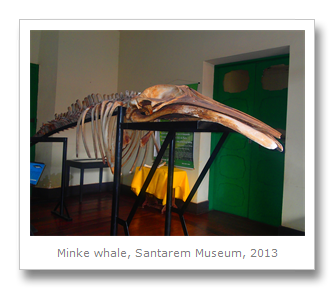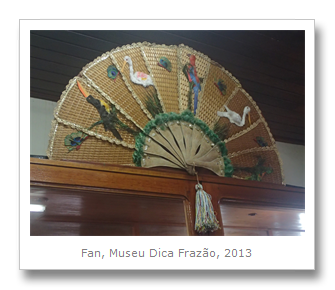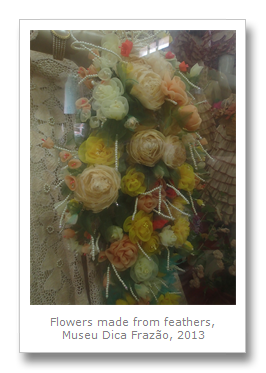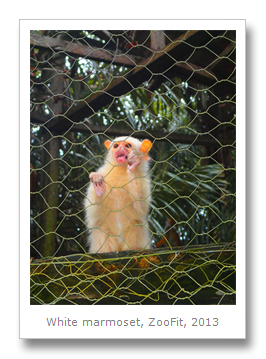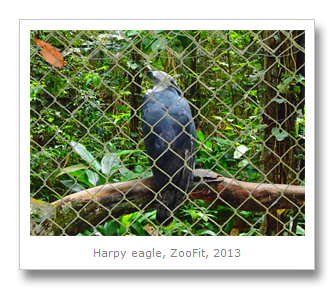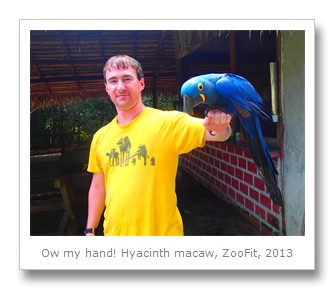We arrived at the smallest airport I have ever been to on the morning of the 26th April 2013. The weather had been reported to be pretty bad at this time (rainy season in the Amazon region is from December to June), and we expected the worst. There were clouds, dark, and thunderous – some of the greyest and largest clouds looming high above us that I had ever seen in any tropical area. Santarem is located slightly further South of the Equator than our previous destination, Belem, but it is still very much everything you have heard about the Amazon.
There are no ATMs at this airport: no frills whatsoever. We collected our bags after walking off of the plane and onto the tarmac and towards the small building serving as the airport arrivals/departures. Taxi drivers swarmed, reminding me of the annoying rickshaw drivers in India – luckily the language barrier helped here and when they observed we were estrangeiros, or foreigners, we were largely ignored. We managed to find out where the bus stop is for Santarem, because, like most cities, the airport is located far outside the city itself. Our hostel was actually sourced online (booking.com) and was located in neighboring village Alter do Chao. Alter is located on the Rio Tapajos (Tapajos river), which is one of many tributary rivers feeding the Amazon river itself. There is no direct bus to Alter from the airport, you have to go into Santarem and then catch another bus out, so we were delighted when a taxi driver leaving the airport pulled up and we haggled him down to about $US25 for the 30km ride. After an early morning flight we were glad to not be messing about with buses!
It turned out to be quite a nice drive, even though the driver was a typical Brazilian taxi driver with poor driving standards and an unhealthy lack of respect for his and his passenger’s lives! We had emailed ahead to the hostel letting them know we would be early, and we were replied to very quickly. They would give us a slightly smaller room for the first morning, and then we could move into our booked room after it was cleaned anytime we wanted. The welcome we got when we arrived was a complete surprise – attentive and friendly, with Christiane, the owner, showing us around. Very atypical from the usual way guests are treated in other hostels, guesthouses or hotels in Brazil.
We decided to get our laundry done here ($R1 per piece, or you can do it yourself at the hostel), an get some sleep. The next day, at perhaps the best breakfast we have had so far (definitely Francesca’s favorite), we were discussing what to do – Alter has various places to explore around it, including Lago Verde (Green Lake), Floresta Nacional do Tapajós (a rainforest reserve for protected species of spider monkey), Belterra (a rubber plantation established with American investment), and Santarem itself. We were interrupted from our reverie by a smiling American who introduced himself as Ryan.
Ryan was heading home soon, after 8 months of traveling all over the world, and he wanted to see some of Alter before he went. We decided to team up and share the cost of hiring a local boat (rather than going with the more expensive local tour agency option), and Ryan found our man. Local fisherman / tourist guide / hard-drinking boatman, Jhon Lennon (a mis-spelled nickname so tourists can spot him easily) owned his own boat and could take us up or down the river. We opted for a half-day trip around Alter’s Lagoa Verde ($R90 for the boat), which would include a stop at Ilha do Amor – an island that contained a large hilltop that we planned to ascend and get pictures from.
We would come to understand that, as it was rainy season, this region is massively affected by flooding, and vast areas of forest, exposed in the dry season, would flood by up to 10 meters in depth in particularly rainy seasons. Alter is in fact known as a beach community, but all of the beach areas were now underwater leaving the area devoid of Brazilian tourists. However, it also meant we would not be affected by the dangerous stingrays living in the sand around these beach areas.
We motored across Alter’s beautiful bay, taking in the sights and all of the submerged structures. Many restaurants and other temporary structures used in the dry season were completely surrounded by 100’s of meters of water. We saw lots of different river birds and it was fascinating to see how flooded the Amazon region actually got. After an hour or so, we headed to the little inlet which had the large hill on it. We had to jump out of the boat, and much to my surprise (although everyone seemed to be OK with it) Jhon Lennon said he would be back in an hour and a half! Alone, in the jungle, with no guide. Exciting times! I quickly saw that there was a well-trodden path which you could not help but follow to the foot of the small mountain, though. This little trek was beautiful and allowed us all to swap traveller war stories. We saw plenty of huge ants, which I spent some time searching for online, but could not find. We are now in the process of trying to identify it – maybe a new species? Ryan’s keen eye also spotted some amazing looking lizards along the way – including one with a beautiful array of shimmering blues and greens.
After a nice walk we arrived at the beginning of the trail up to the top. We all nearly made it to the top, but it was incredibly hot by then, and Francesca’s knee was starting to get painful so she waited for us to return. We got to the top and the view was definitely worth the walk! Also, for the first time, I saw leaf-cutting ants on the way up! At some point the superstitious locals must have dragged an iron cross up to the top of the hill. This is very popular in Brazil and is the locals version of Corcovado in Rio I guess. Still, we could see the whole of the surrounding region now, including the view out over the river Tapajos to the forest on the other side.
We got back with no particular issues – our guide was waiting for us when we arrived, and we all hopped in and zoomed off back towards the village. It had been a good day, so we all decided to go in again with this guide and make a whole day of it the next day and explore the Canal do Jari (Jari Canal), which was a trip across the Amazon itself (R$300 for the boat).
We left Jhon Lennon and we went and got some ice-cream, food from the local supermarket (this now has a working, albeit, temperamental ATM - against all advice in our Lonely Planet), and headed back to the hostel to recharge our batteries. Francesca was nauseous that night most probably because the ice-cream she ate had gone off. Being the trooper that she is, however, she got some sleep and was back to normal by morning in time for our day trip to the Jari Canal where we had heard they had the giant lily pads we had only seen on TV!
We met with Ryan for breakfast the next day and we all set off to meet Jhon Lennon at Alter’s waterfront. Imagine! We loaded up the cooler Jhon had bought (water, fruit and beer), and the three of us (Paul, George and Ringo) all boarded. We pushed off and motored out of Alter’s bay onto the Tapajos river and towards the point where it meets the mighty Amazon! I really felt like I had not seen the true Amazon at this point, even though we obviously saw it in Belem, and from the plane the morning we arrived, but this was actually travelling ON the Amazon! Very exciting to actually be there, looking out for caiman, dolphins, macaws and anaconda – all, except the anaconda, of which we would encounter in the weeks to come…
The journey started off OK, then it quickly became clear that the crossing would take at least 45 minutes, going pretty flat out in the speedboat. The crossing here is vast, at least 50km from Alter, especially with the swollen banks of the river reaching so far into the várzea, or flooded forest. 500 miles from the sea, the river here is known as The Inland Sea. It certainly behaves as such. We encountered small to medium waves that made the journey pretty exciting, and our boatman had to slow down at some of the bigger ones, less it capsize us, or damage the boat! Good stuff…
We got to the other side, and we pulled over to a submerged tree (the tall trees poke out of the water here, so it feels like you are in the canopy, even thought the trees are fairly widely spaced apart). We tied off the boat and Jhon Lennon got his fishing rod out and did some piranha fishing! Piranha’s are attracted by thrashing about in the water, so the trick is the thrash the water with the rod and then cast in your bait. It took about 5 seconds and Jhon was reeling in a large piranha fish. This was cool, as I had never seen a piranha before – and it definitely lived up to its reputation. The teeth were huge and its scary red eyes made it look extremely fearsome! A Piranha’s worst nightmare is a caiman, and it’s second worst nightmare is man. Attacks on people are extremely rare, but judging by the look of this thing I wouldn’t take my chances. It is a very good idea to have a guide with you on the Amazon, because they know where the caiman and piranha hang out, so you can avoid them when bathing, or find them if you want to take pics or eat them!
We again saw numerous submerged buildings on the way over to Jari, schools that were closed, and churches that were totally deluged. It really looks like an apocalypse scene in the rainy season here, but surrounded by such magnificent beauty! Many different fish and bird species live here, including greater egrets, lily trotters, yellow-billed gulls, little blue and greater blue herons and a host of different birds of prey. With so many birds in our photos we have found it extremely difficult to identify them online!
Heading up the Jari Canal and we saw what we had come for. Giant lily pads were floating off to the side of he channel, sitting behind the tree line, back into the flooded forest. We cut through the grasses with the boat and headed over to them. These were vast! I had seen some before on TV, and had seen some in Belem’s zoological park; but they were much smaller due to the confining size of the pond they were in. These ones in the wild are HUGE! Over a meter across, they can support the weight of a person.
The lily flowers are white and give off a sweet pineapple aroma on the first night that they bloom. They can be over a foot across. They then close during the next day, open again on the second night, by which time they have colored pink, and then close one final time and withdraw back under the water. The reason they do this? When they open for the first time, they attract many different bugs and beetles. These beetles are trapped by the closing flower for 24 hours, until the flower releases them the following night. The bugs are covered in the flowers pollen, and because the flower is now pink and has no aroma, the bugs make off for another plant, avoiding self-fertilization, and promoting cross-pollination with other flowers. Genius. The leaves themselves are basically large structures comprising of veins of air, that keep the leaf afloat. These make themselves extremely big to attract as much sunlight as possible, and to stop any competition from getting any. The underside of the leaf is extremely spiny and sharp to stop fish and other predators from eating it. The edges curl up so that the leaf can shoulder aside any other leaves in its way. These have to be in a list of top ten amazing things that happen in nature.
After getting our fill of the giant miracles, we stopped off at a little community on the river. It was a holiday for this community (it was never explained which one), and everyone was either getting liquored up, or taking part in a big football competition. I think we just stopped so our guide could stock up on more beers, though, which was funny as he was getting a bit drunk by this point.
After a while, we decided to leave – it was not the most comfortable experience as we were being stared at by everyone, and it felt like we were not exactly invited by the community – only by our now drunken friend. We hopped back in the boat and headed back to Alter.
The crossing was much calmer going back, due to the tides I guess, and we even spotted two grey river dolphins – our first sighting! Amazon folklore has these dolphins as shape-shifters that seduce and mate with humans, and that if you catch ones eye you will have nightmares. Most probably this hogwash was conjured up to cover incestuous pregnancies which occur in the small communities here. Nevertheless, the dolphins are a lot smaller than the ones we normally see in the sea, and were a joy to look at, their fins peeling out of the water to a backdrop of sunset, and Amazonian rainforest.
Our last stop was a little dip in the Amazon itself – we were assured by our guide there were no caiman or piranha in a little portion of the flooded forest (back on the South side of the Amazon). I jumped at the chance to get into the Amazon river, and the water was lovely – if not a little intimidating with its black coloration.
Ryan and I also got our chance to pilot the boat on the way back, which was a nice touch from Jhon Lennon. He was a good guide, and was obviously trying his best to be a better guide, by learning more English, and taking his own pictures for his up and coming website. Things did get a bit weird with him at one point, I think because he had had too many drinks on an empty stomach. Bad Jhon Lennon! Still, if you go to Alter, ask around and make up your own mind about which guide to choose – there is no shortage of guys sitting around with nothing to do this time of year (rainy season).
Ryan upped and left for the States that evening, and Francesca and I decided that we wanted to ask the hostel to arrange our trip to FLONA – the National Forest of Tapajos reserve. The reserve was created in the 70s to protect two threatened species of spider monkey that live there. The hostel arranged for our guide there (hour long boat ride to a community called Jamaraquá), entry fee to the park, guide for a 3 hour trek in the jungle, and lunch all included at a reasonable price. This would be our first actual walk in the Amazon rainforest!
We set off to FLONA on the 30th April with our guide Ronaldo. The motorboat took us quickly to a community down the Tapajos river (named after the Tapajos Indians who lived there) called Jamaraquá, and we met the local family there who host tourists overnight (we opted to go back to our A/C hostel room that night). Very welcoming people, the community here is a collective of sorts, with sports (like the football field), fishing and various community projects all creating the social fabric needed for the community to progress. Rubber and manioc (cassava) production is big here, and it was our amazing local guide who showed us for our first time, how people extract latex / rubber from the trees directly (a process called rubber tapping).
Basically, you score the tree diagonally from top to bottom about 9 inches along with a special tool, and then dig into the tree and hang a container under where you scored. Leave this for a few hours (it is done in the early morning hours when the cooler temperature allows the rubber to run down as a liquid), and when you come back you have a container of white, liquid latex. Our guide gave us a piece fresh from the tree and we balled it up, like chewing gum. Amazing to see – and makes you appreciate how all that rubber stuff is made. With the many uses for rubber in the early 20th Century (especially from the up and coming car tire industry), it is no wonder Belem had such a financial boom.
After this, and after Francesca getting a warning about the fire ants that were about to crawl on her arm, we made our way with our new guide across the football for a 3-4 hour trek through the jungle. Luckily our Portuguese was now good enough to understand our guide, as he did not speak English. However, he was very patient, passionate, and a lot of fun (not to mention his hilarious howler monkey impression).
He showed us various seeds, plants, an trees with a multitude of purposes. Everything from soap, shampoo, jewelry, toothpaste, fuel and food – the jungle provides!
Here the jungle is extremely dense, but in the reserve there are tourist trails maintained by the locals so it was fairly easy going. Covering your feet is a must though – there are numerous ants, leaves, thorns and even snakes that will bite you if trifled with! Francesca found something a little more incongruous: a 10mm long lizard. I don’t know how she saw it, but it was one of the rare lizards that we were told about in Natal’s sand dune park. Very difficult to see! In fact, we got a photo, but as soon as it moved it disappeared under a leaf, and although I looked for it, you don’t want to be moving too much stuff around on the jungle floor, so it got away!
We saw numerous fungus, vines, parasitic plants and broad-leafed trees along our walk. Extremely peaceful and beautiful, along with a feeling of excitement. At one stop, our guide showed us a plant that you can cut up to the size of a cigarette and literally set fire to it, and smoke it! As an ex-smoker I wanted to give it a little try and I can report it smoked exactly like a Dunhill. Very nice – but I have still quit, so don’t worry Mum!
We found little monkey skull, which, to me, was a little too conveniently placed on the trail. Maybe a tourist photo op, but it was fun all the same.
We found spiny trees I had never seen before, butterfly pupa, strange insects were everywhere, but moved too quickly to be identified or photographed – this whole region is a biologists wet dream – and new species are discovered here almost everyday.
Our guide indicated we were now moving from secondary to primary rainforest, and I could tell the difference. Secondary is rainforest that gets disturbed either naturally, or by man. In this case, we were moving away from the secondary forest that is changed by flooding, to the more pristine primary forest. The canopy was now much fuller, and the forest got a bit darker. Most importantly though, some of the trees got much bigger! This is because these protected trees are hundreds of years old. Brazil nut trees, Kapoks and the ‘mother of trees’, the Samaúma. Our walk took us past bigger and bigger trees, until, at last, we came to our prize: a Samaúma that 20 people could not link arms around. It was vast!
We had been some time now, a little bit longer than expected, so we started back – we were treated to two great things on the way back. First, our guide took us to a stunning opening in the jungle which overlooked the rainforest itself – beautiful.
Secondly, on our way back we also saw a family of Prince Bernhard’s titi monkeys playing above us. They were extremely curious of us, an the alpha even started to approach, so we decided to leave. They are only tiny compared to us, but monkeys are very strong, and they outnumber us by many!
We did hear other animals on the way back – groups of male howler monkeys, howling at each other – a very eerie sound, indeed! And we also heard a harpy eagle, the biggest and most powerful bird of prey in America. It is extremely rare, and we unfortunately did not see it. I also spotted a toucan way up in the canopy! A great experience all round. I can definitely say we loved the jungle – but I would never go there without a guide, and a big sharp machete.
We got back to the community, and lunch was laid on by the family for us. It was delicious! White rice, spaghetti, fried chicken, fried fish (caught that morning), beans, and salad. This is the sort of simple Brazilian fare that we have found all over the country – simple, packed with carbs, but fairly tasty when you have built up such an appetite!
After lunch we admired the family's parrot and domesticated coati that they had. After this we were taken on an hour long canoe ride by our local guide through the flooded forest. Here we saw numerous Bromelia, ants nests, termites nests and far flung birds. No huge mammals or caiman at this time of day, though, as they mostly come out at night!
When we got back, we had a look at the rubber souvenirs and the rubber processing shop. The rubber is mixed together with water and poured through a press. This is then died with natural products from the forest, and you can see some of the drying process in the photos too.
We said goodbye to our local guide, and then our Alter guide, Ronaldo took us back in the boat. Funnily enough, about a kilometer out, we ran out of gas! What is it with these boatmen? Ronaldo won’t be doing that again though, as he had to paddle us into shore – which took about 45 minutes of solid rowing. This was actually quite nice, because it gave us a chance to watch the sunset over the jungle, and we watched the fishing bats flying over the water by the lights of the boats and various buildings we passed as we entered the village. If you go to Alter, we definitely recommend you stay at Hostel Pousada Tapajos and take the FLONA tour, as this was a trip highlight for us.
We also decided to visit Santarem itself before we were due to fly out to Manaus, even further down the Amazon. The hostel gave us excellent directions (there is an information board in Portuguese and English – something simple that other hostels and hotels are stupid not to do) to get a local bus, an we crammed inside for a 45 minute standing journey which was arduous but saved us valuable dinheiro.
Santarem was the home of the Tapajos Indians whose ‘capital’ was located here amidst a successful agricultural kingdom. But that was before the colonization and systematic wipe-out of the indigenous people. There were many neighboring tribes, such as the Boraris who lived in present day Alter, but most of these people were wiped out so quickly, and the culture assimilated so swiftly, that we will never know much about them at all.
Two rivers meet here, where Santarem was founded in 1661; the Amazon and the Tapajos. They run side by side for a few kilometers without mixing, which the locals call The Meeting Of The Waters. This phenomenon, which we also encountered later in Manaus, is due to the rivers moving at different speeds and at different temperatures (the reason they don’t mix), with different colors (the Amazon is darker due to the foliage it sweeps up along the way from the Andes). We did not take a boat in Santarem, but we did see this natural wonder from the plane when we left, and also from the city itself.
First stop in Santarem was the Museu de Santarem, which is an easy 10-15 minute walk from where the bus drops you off in centro. This building has been a courthouse, a city hall and a jail (like many other cultural spaces in Brazil). Another museum with no English guides, literature or plaques, I’m afraid, so it won’t be for everyone. However, our Portuguese was now up to scratch, and we learned a little from the Brazilian guide who was there. The first room has furniture from the time of when the building was a city hall and courtroom, alongside an array of portraits of every single governor of the state of Para (a strange custom repeated around this area – imagine if all of our museums had pictures of every single elected official all over the walls…).
There is a pretty small but interesting collection of artifacts from around 6000 years ago to just before the Europeans arrival when the local stone age civilizations flourished here.
Perhaps most surprising of all though, was a room with a minke whale skeleton in it. From the articles on the wall, and by asking our guide, we managed to cobble together the story of when, in 2007, the whale had lost its way and swam 1000km up the Amazon river and became lost in the Tapajos river. It got stuck several times and freed by locals and biologists, from sandbanks, but it died. No-one knows why it swam there, but similar things happen elsewhere.
We then headed up the road to another museum called Museu Dica Frazão, which is a museum dedicated to Dona Dica Frazão, a 93 year old polymath, who has spent her life sourcing materials for, designing and creating (single-handedly), all-natural clothes for the rich and famous including the Pope JPII, Brazilian Presidents and Belgian royalty. She also has written poetry, made hats, fans and numerous other accessories. We had to knock on the door to see if this museum was open – and we discovered the museum is really a space in her house! She made an appearance in her wheelchair and showed us around. She was still sharp as a tack and was able to communicate to us in Portuguese that was at our level so we could understand. A very talented and nice lady.
Last stop in Santarem was ZooFit. Make sure you show the taxi driver on the map where it is – otherwise you end up at the gym, haha! ZooFit is a project started in Santarem in 1993 as a place where rescued animals can be rehabilitated before being released back into FLONA. This project encourages ecotourism and ecological preservation through teaching, tourism and research. Animals kept here are animals either domesticated animals freed from local communities, or are animals that have been freed from the traffickers. Animal trafficking is abundant in this region. Illegal activities such as drug trafficking, illegal logging, animal trafficking and even people trafficking often merge as criminal gangs operate with near autonomy. At an estimated $US 6 billion a year, this industry is not going way soon, but Brazil’s Feds are now getting help from Interpol to affect arrests. It is a direct result of what these traffickers do, that animals such as the Lear’s Macaw have dwindled in numbers. Estimates are now under 1000 for this bird which could get you $US 90,000 per bird in 2008. Find out more at WWF.
Among the rescue animals we saw were some of the animals we saw at FLONA, and some of the ones we had just heard in the wild. Spider monkeys, caiman (alligators by another name), marmosets, harpy eagles, numerous types of macaw, coati, parakeets, turtles, capuchins, an anaconda, electric ell and even two pumas (in quarantine due to stomach disease). Definitely worth a visit, but make sure you get a reputable taxi driver, and do not pay him to wait. Our guy tried his best to rip us off, but Francesca was not having any of it!
We left on a very early flight to Manaus a few days after our Santarem day-trip, and our helpful hostel arranged for us to go in a taxi with another Japanese couple who were also flying out to Sao Luis so we could share the cost. We had packed the previous night and got up extremely early to find the hostel owner awake and giving us a very nice gift of a packed breakfast to take with us! Very touching.
On the way to the airport the heavens opened and it rained heavily, and our taxi driver was driving way too fast for the road conditions. A terrible mistake. He hit a big pothole and the tire burst. With only half hour to go before our flights left, the taxi driver flagged down a complete stranger, who, amazingly, drove even worse than the taxi driver, and we just made it in time. This taxi driver was so poor at driving I almost punched him – especially when he then tried to ask us for more money, having pretty much crashed the car, packed us into a strangers car, and did not even get us to the destination. What an asshole. Anyway, I will definitely miss Alter do Chao. It was a great introduction to the Amazon Jungle.
